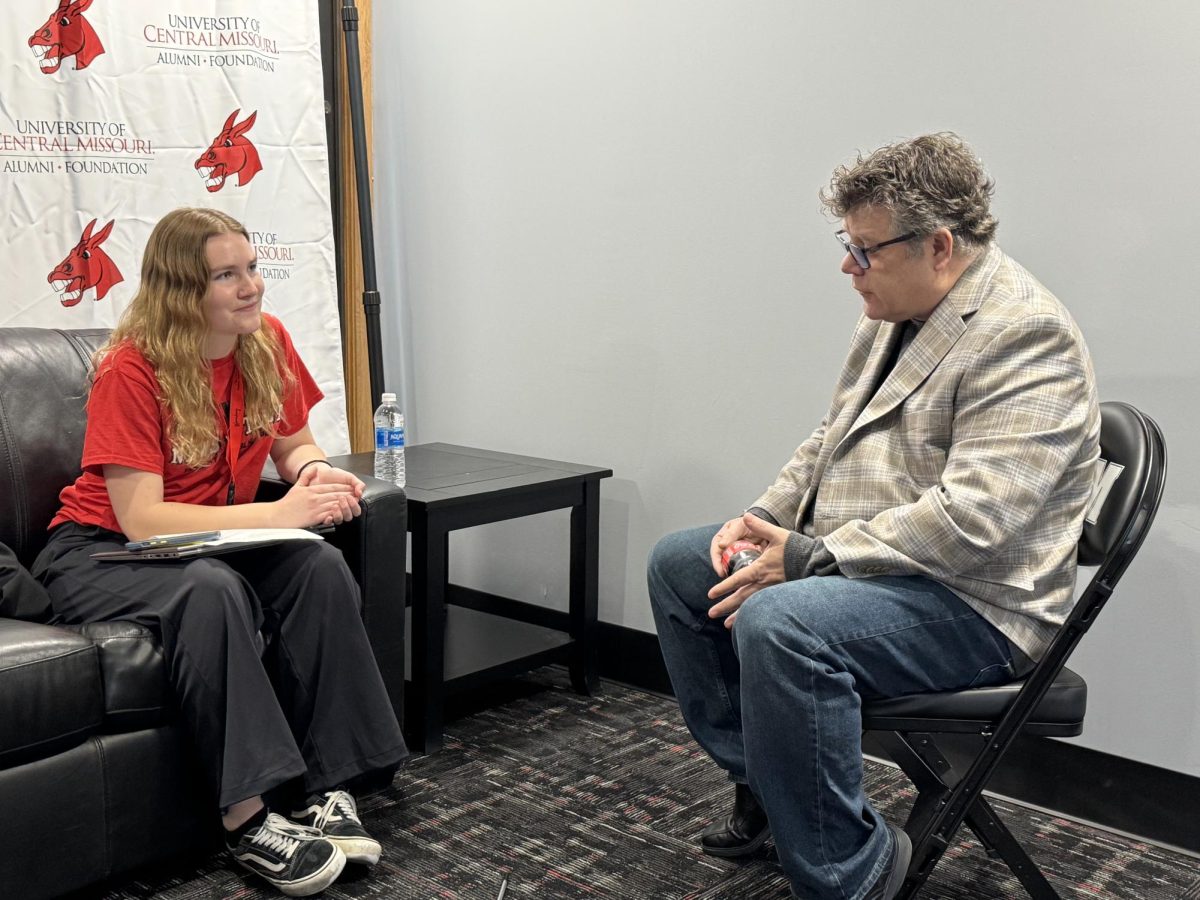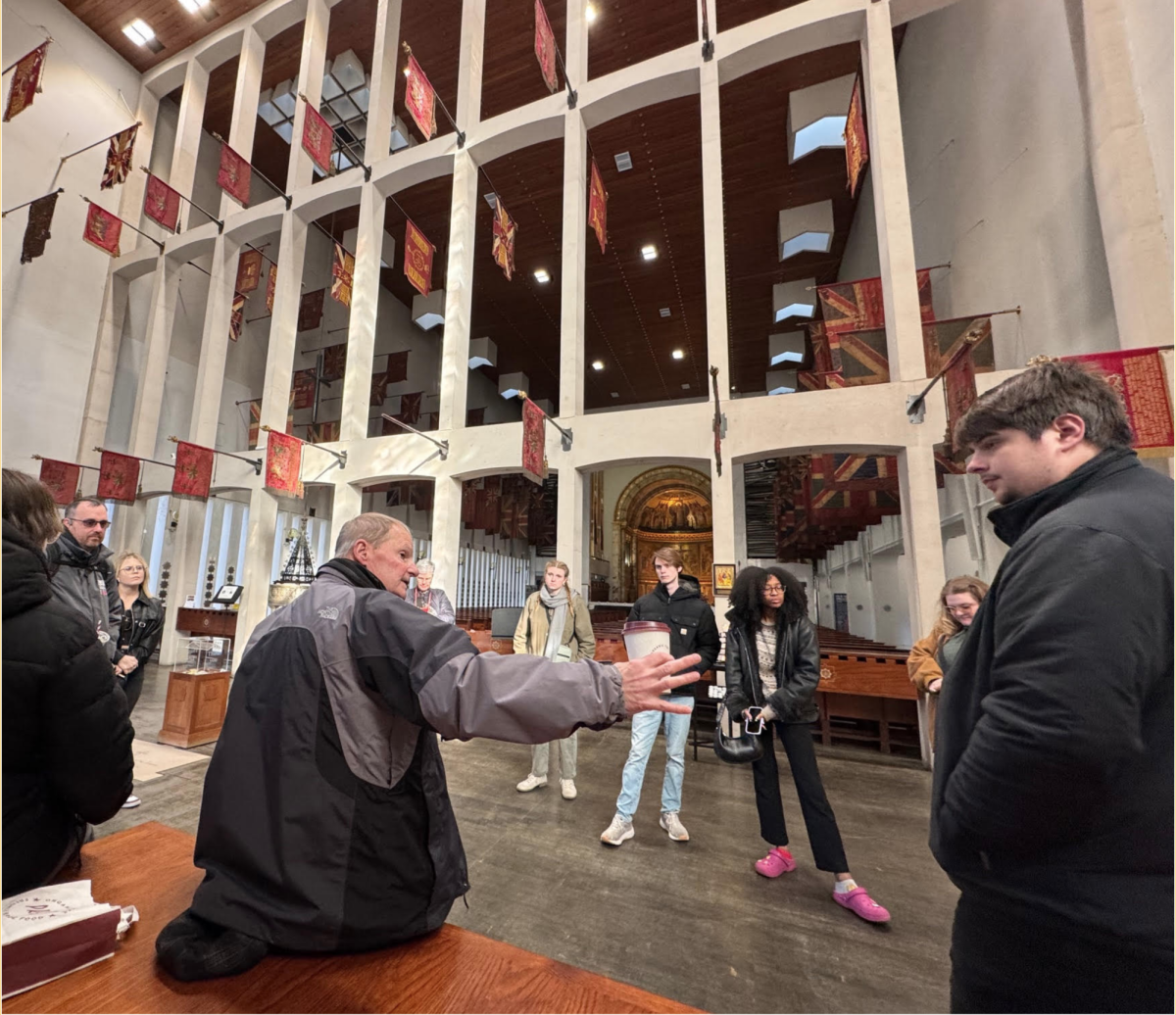By RUTH SERVEN
(KANSAS CITY, Mo., AP) — On a Wednesday night, 40 people gather in the dim side room of Waldo Pizza for the weekly meeting of a new Rotary club. They wear suits, skirts and blue polos with Rotary’s wheel logo.
One of officer Mark Landes’ kids, sitting in a corner booth, reaches up and rings a bell to signal the start of the meeting.
That’s not a scene you’d see in a typical Rotary meeting. Kids, women, minorities, pizza — it’s all an effort to slow the long decline of Rotary and similar service clubs, The Kansas City Star (http://bit.ly/29y42ck) reports.
At the Waldo-Brookside Rotary, started a year ago, members share pepperoni and veggie pizza and sip cocktails while speakers share their personal stories and pass a hat to fundraise.
John Fales, a young professional and a financial adviser for Searcy Financial, talked about childhood memories and his love of KU basketball. Josephine Njoroge, a former teacher, spoke with a Louisiana lilt about going to segregated schools and advocating for education and kids in Kansas City.
Historically, neither would have been Rotary members. Rotary clubs were closed to women until the 1980s, and in the United States clubs have typically been dominated by older, white men.
Social clubs like Rotary, Kiwanis and Lions used to be in the center of American community life. Fifty years ago, weekly and monthly meetings were a way to network and support worthy causes.
In the U.S., these organizations face declining memberships, dues and influence, and must decide how to attract new members and shift their focuses to stay alive.
Clubs like Kiwanis, Rotary and Lions have always provided an excellent way to build social capital — or the bonds built within communities by people interacting over time — a term popularized by Robert Putnam in his 2000 book “Bowling Alone.”
Putnam attributed much of the decline in organizations and activities to generational changes, the increase of the female workforce and to media.
For a long time, service clubs depended on building bonds with like-minded individuals. Often, those individuals looked a lot like them. Service clubs in Kansas City have recently been reaching beyond that network and building bridges with new communities and old partners.
Nationally, Rotary has about 330,000 members and 7,700 clubs, down from 346,000 members and 7,840 clubs in 2011, said Brian King, director of membership development for Rotary International. But, he said, the rate of decline is slowing. And in communities where Rotary clubs are becoming more creative and flexible with their meeting times and methods, King said there has been a turnaround.
Small towns and small clubs have had trouble in Rotary District 6040, which covers the northern half of Missouri, said Ralph Cupelli, the district’s former governor.
Last year, a small club in Kansas City decided to fold; it didn’t have the membership to keep going.
“Families are busier today,” Cupelli said. “Parents are more involved and have less time. And in small towns, as towns have lost local businesses, there are fewer people available to join Rotary.”
But one historic club in Kansas City has been able to stabilize its sliding membership.
The downtown Rotary 13 Club — the thirteenth Rotary ever founded, hence the name — has made it easier for new members to join, said Chuck Eddy, outgoing president.
In addition, Eddy said, the increasing racial and gender diversity of the business world has helped increase diverse membership in the club, which participates in various charitable activities including a summer camp for kids with disabilities and giving bagels to the hungry.
“We have to replace ourselves,” Eddy said, “and we don’t want to replace ourselves with old, white men.”
Nationally, Rotary members are only about 20 percent female, according to Rotary International. Only about 10 percent of members are under the age of 40.
But King said that as business communities evolve, Rotary should also evolve.
“Rotary certainly has a stereotype of being a club for old men,” King said. “But Rotary is uniquely positioned to meet the needs of all generations. There’s a dual focus — Rotary wants to be attractive to young professionals, but retirees have expertise and are still an important part of our community.”
In the Kansas City area, Rotary also has increased its reach and changed its demographic by beginning the Waldo-Brookside club. It started a year ago with 50 members and has grown to 70.
At Waldo Pizza, members are young and old, male and female, black and white. They also pay a lot less for membership — the nearby Plaza club’s dues are $200 per quarter, but Waldo-Brookside members pay $50 per quarter, a price much more affordable for members beginning careers or families.
One member, Dan Ryan, said he hasn’t seen the same level of female, minority and young professional involvement in other Rotary clubs.
“It’s symbolic of our club that our first president was a young woman,” he said.
For Angie Gutierrez, Waldo-Brookside’s first president, Rotary’s appeal was mainly in finding other professionals who lived in her neighborhood. Many members live and work in Waldo and Brookside.
“They’re people who live close to me who I would never have known without Rotary,” Gutierrez said.
The older members are encouraged by the youth of the group. Corinne Corley has been secretary for the club’s first year, but she’s ready to hand off to the next secretary, who is two decades younger.
Most Waldo-Brookside members are working on their careers and beginning families; some brought their kids to the Wednesday meeting. Corley said the Waldo-Brookside members, with an average age of 45, skew 20 years younger than the typical Rotarians.
“In most Rotaries, I’d be one of the young ones,” Corley said.
Other service clubs have adjusted by doubling down on their service programs or by encouraging longtime community partners to become members.
At its height, the downtown Kiwanis chapter in Kansas City, founded in 1918, boasted 200 members. That number has shrunk to about 25.
“It’s hard for people to leave work at lunchtime and come to our meetings every week,” said Mindy Sperry, outgoing president of the chapter. “We used to joke that it was an old man’s club because the people who could regularly make it were retired.”
Despite the meeting time, the club still attracts some new members. Kiwanis emphasizes outreach and has a membership drive every summer to drum up interest. Members usually join when they have existing ties to the organization — Sperry initially became interested because her grandfather, Kenneth Colston, was a member for 50 years.
Kim Kass, an attorney, wanted a chance to get involved in service work in the city. After a friend got involved in Kiwanis, Kass decided to join. She said she was especially interested in the club’s main philanthropic project, the Student Assistance Program, which supports programs for homeless high school students.
“Clubs like this are a time-tested way for people to come together and do great things,” Kass said.
The club is trying to increase the number of women and younger members, Sperry said. Kiwanis opened membership to women in 1987.
The Lions have a strong connection to the city of Leawood, but for a long time, it was tough to get new members.
The club has begun to adjust, said Peggy Jacobson, who has been involved with the Lions for 24 years. It’s changed meeting times, added more networking and tried to connect with more local organizations.
“The big struggle in all organizations is getting into the new era,” Jacobson said. “I feel like we just did that in the past year.”
Jacobson, who was the 2015-16 president of the Leawood Lions, has overseen projects to do eye screenings for low-income and homeless residents, pick up used eyeglasses and recycle lenses and build a shelter in the Leawood City Park. Internationally, the Lions are one of the biggest service organizations, and are known for their work to end preventable blindness.
In the past few months the Leawood club has gained five new, younger members.
One of the first to join was a web developer, who quickly built the club a new website and a social media presence and began inviting his friends, Jacobson said. The club’s facelift helped persuade prospective members that the Lions were still relevant, and more members quickly committed.
“They tell us we’re the best kept secret,” Jacobson said.
A partnership with a local Boy Scout troop has helped pull in the parents of some Scouts.
The Lions and Troop 10 have always worked together, but a few parents recently decided to get more involved in the service club, said Dave Powell, a scoutmaster for Troop 10 and a new member of the Leawood Lions.
The club is one of the charter organizations for Troop 10. By working together, both hope to increase their voice in the community and gain valuable support.
“We felt like it was time to pool our resources and help each other,” Powell said.
Powell himself is interested in the Lions’s professional and interpersonal training opportunities, but he’s most excited for what the Lions can teach his son. Harrison, 13, began researching the Lions’ flagship program to donate and recycle eyeglasses and decided to collect thousands of glasses for his Eagle Scout project. Powell said his son’s excitement felt like a grand slam moment for him as a parent.
Moments like those are what will encourage the next generation of service club members, Powell said.
In the next hundred years, Rotary’s King said, service clubs will have to continue to evolve.
“We really don’t see our values changing,” King said. “We just might have to adjust how we address them.”
___
Information from: The Kansas City Star, http://www.kcstar.com.
One of officer Mark Landes’ kids, sitting in a corner booth, reaches up and rings a bell to signal the start of the meeting.
That’s not a scene you’d see in a typical Rotary meeting. Kids, women, minorities, pizza — it’s all an effort to slow the long decline of Rotary and similar service clubs, The Kansas City Star (http://bit.ly/29y42ck) reports.
At the Waldo-Brookside Rotary, started a year ago, members share pepperoni and veggie pizza and sip cocktails while speakers share their personal stories and pass a hat to fundraise.
John Fales, a young professional and a financial adviser for Searcy Financial, talked about childhood memories and his love of KU basketball. Josephine Njoroge, a former teacher, spoke with a Louisiana lilt about going to segregated schools and advocating for education and kids in Kansas City.
Historically, neither would have been Rotary members. Rotary clubs were closed to women until the 1980s, and in the United States clubs have typically been dominated by older, white men.
Social clubs like Rotary, Kiwanis and Lions used to be in the center of American community life. Fifty years ago, weekly and monthly meetings were a way to network and support worthy causes.
In the U.S., these organizations face declining memberships, dues and influence, and must decide how to attract new members and shift their focuses to stay alive.
Clubs like Kiwanis, Rotary and Lions have always provided an excellent way to build social capital — or the bonds built within communities by people interacting over time — a term popularized by Robert Putnam in his 2000 book “Bowling Alone.”
Putnam attributed much of the decline in organizations and activities to generational changes, the increase of the female workforce and to media.
For a long time, service clubs depended on building bonds with like-minded individuals. Often, those individuals looked a lot like them. Service clubs in Kansas City have recently been reaching beyond that network and building bridges with new communities and old partners.
Nationally, Rotary has about 330,000 members and 7,700 clubs, down from 346,000 members and 7,840 clubs in 2011, said Brian King, director of membership development for Rotary International. But, he said, the rate of decline is slowing. And in communities where Rotary clubs are becoming more creative and flexible with their meeting times and methods, King said there has been a turnaround.
Small towns and small clubs have had trouble in Rotary District 6040, which covers the northern half of Missouri, said Ralph Cupelli, the district’s former governor.
Last year, a small club in Kansas City decided to fold; it didn’t have the membership to keep going.
“Families are busier today,” Cupelli said. “Parents are more involved and have less time. And in small towns, as towns have lost local businesses, there are fewer people available to join Rotary.”
But one historic club in Kansas City has been able to stabilize its sliding membership.
The downtown Rotary 13 Club — the thirteenth Rotary ever founded, hence the name — has made it easier for new members to join, said Chuck Eddy, outgoing president.
In addition, Eddy said, the increasing racial and gender diversity of the business world has helped increase diverse membership in the club, which participates in various charitable activities including a summer camp for kids with disabilities and giving bagels to the hungry.
“We have to replace ourselves,” Eddy said, “and we don’t want to replace ourselves with old, white men.”
Nationally, Rotary members are only about 20 percent female, according to Rotary International. Only about 10 percent of members are under the age of 40.
But King said that as business communities evolve, Rotary should also evolve.
“Rotary certainly has a stereotype of being a club for old men,” King said. “But Rotary is uniquely positioned to meet the needs of all generations. There’s a dual focus — Rotary wants to be attractive to young professionals, but retirees have expertise and are still an important part of our community.”
In the Kansas City area, Rotary also has increased its reach and changed its demographic by beginning the Waldo-Brookside club. It started a year ago with 50 members and has grown to 70.
At Waldo Pizza, members are young and old, male and female, black and white. They also pay a lot less for membership — the nearby Plaza club’s dues are $200 per quarter, but Waldo-Brookside members pay $50 per quarter, a price much more affordable for members beginning careers or families.
One member, Dan Ryan, said he hasn’t seen the same level of female, minority and young professional involvement in other Rotary clubs.
“It’s symbolic of our club that our first president was a young woman,” he said.
For Angie Gutierrez, Waldo-Brookside’s first president, Rotary’s appeal was mainly in finding other professionals who lived in her neighborhood. Many members live and work in Waldo and Brookside.
“They’re people who live close to me who I would never have known without Rotary,” Gutierrez said.
The older members are encouraged by the youth of the group. Corinne Corley has been secretary for the club’s first year, but she’s ready to hand off to the next secretary, who is two decades younger.
Most Waldo-Brookside members are working on their careers and beginning families; some brought their kids to the Wednesday meeting. Corley said the Waldo-Brookside members, with an average age of 45, skew 20 years younger than the typical Rotarians.
“In most Rotaries, I’d be one of the young ones,” Corley said.
Other service clubs have adjusted by doubling down on their service programs or by encouraging longtime community partners to become members.
At its height, the downtown Kiwanis chapter in Kansas City, founded in 1918, boasted 200 members. That number has shrunk to about 25.
“It’s hard for people to leave work at lunchtime and come to our meetings every week,” said Mindy Sperry, outgoing president of the chapter. “We used to joke that it was an old man’s club because the people who could regularly make it were retired.”
Despite the meeting time, the club still attracts some new members. Kiwanis emphasizes outreach and has a membership drive every summer to drum up interest. Members usually join when they have existing ties to the organization — Sperry initially became interested because her grandfather, Kenneth Colston, was a member for 50 years.
Kim Kass, an attorney, wanted a chance to get involved in service work in the city. After a friend got involved in Kiwanis, Kass decided to join. She said she was especially interested in the club’s main philanthropic project, the Student Assistance Program, which supports programs for homeless high school students.
“Clubs like this are a time-tested way for people to come together and do great things,” Kass said.
The club is trying to increase the number of women and younger members, Sperry said. Kiwanis opened membership to women in 1987.
The Lions have a strong connection to the city of Leawood, but for a long time, it was tough to get new members.
The club has begun to adjust, said Peggy Jacobson, who has been involved with the Lions for 24 years. It’s changed meeting times, added more networking and tried to connect with more local organizations.
“The big struggle in all organizations is getting into the new era,” Jacobson said. “I feel like we just did that in the past year.”
Jacobson, who was the 2015-16 president of the Leawood Lions, has overseen projects to do eye screenings for low-income and homeless residents, pick up used eyeglasses and recycle lenses and build a shelter in the Leawood City Park. Internationally, the Lions are one of the biggest service organizations, and are known for their work to end preventable blindness.
In the past few months the Leawood club has gained five new, younger members.
One of the first to join was a web developer, who quickly built the club a new website and a social media presence and began inviting his friends, Jacobson said. The club’s facelift helped persuade prospective members that the Lions were still relevant, and more members quickly committed.
“They tell us we’re the best kept secret,” Jacobson said.
A partnership with a local Boy Scout troop has helped pull in the parents of some Scouts.
The Lions and Troop 10 have always worked together, but a few parents recently decided to get more involved in the service club, said Dave Powell, a scoutmaster for Troop 10 and a new member of the Leawood Lions.
The club is one of the charter organizations for Troop 10. By working together, both hope to increase their voice in the community and gain valuable support.
“We felt like it was time to pool our resources and help each other,” Powell said.
Powell himself is interested in the Lions’s professional and interpersonal training opportunities, but he’s most excited for what the Lions can teach his son. Harrison, 13, began researching the Lions’ flagship program to donate and recycle eyeglasses and decided to collect thousands of glasses for his Eagle Scout project. Powell said his son’s excitement felt like a grand slam moment for him as a parent.
Moments like those are what will encourage the next generation of service club members, Powell said.
In the next hundred years, Rotary’s King said, service clubs will have to continue to evolve.
“We really don’t see our values changing,” King said. “We just might have to adjust how we address them.”
___
Information from: The Kansas City Star, http://www.kcstar.com.






